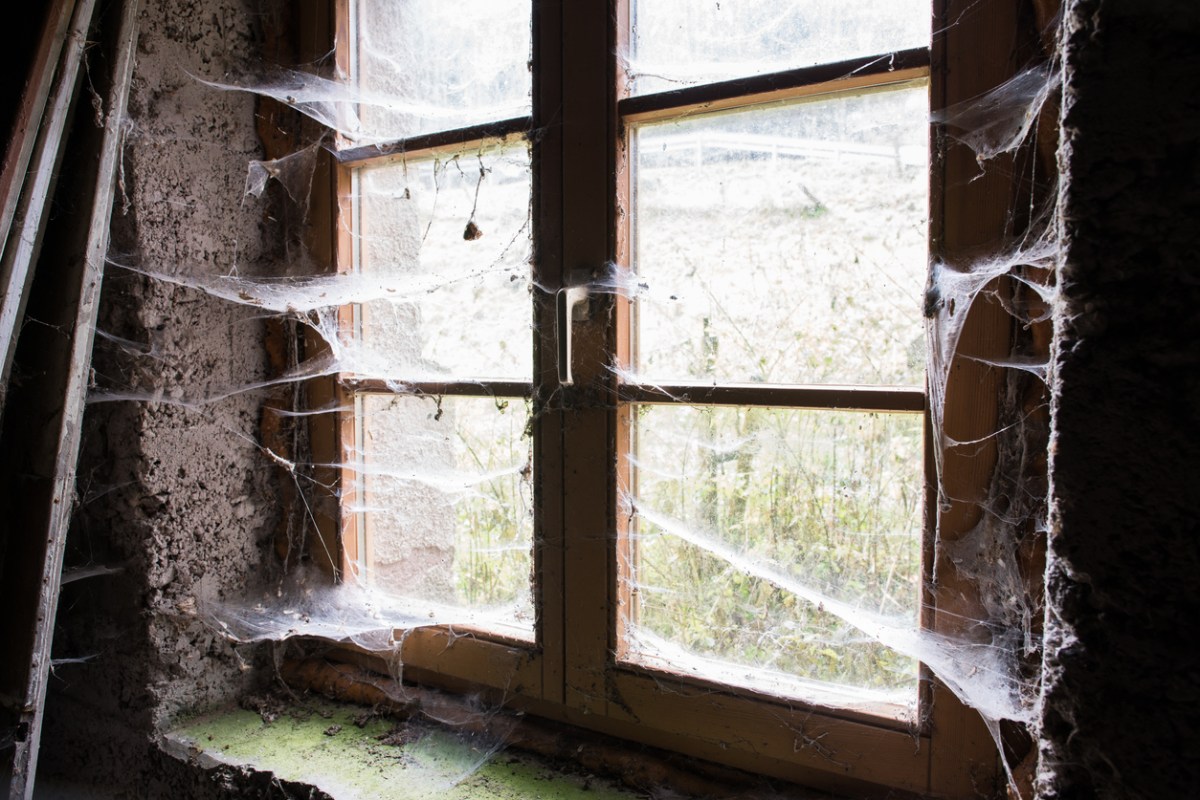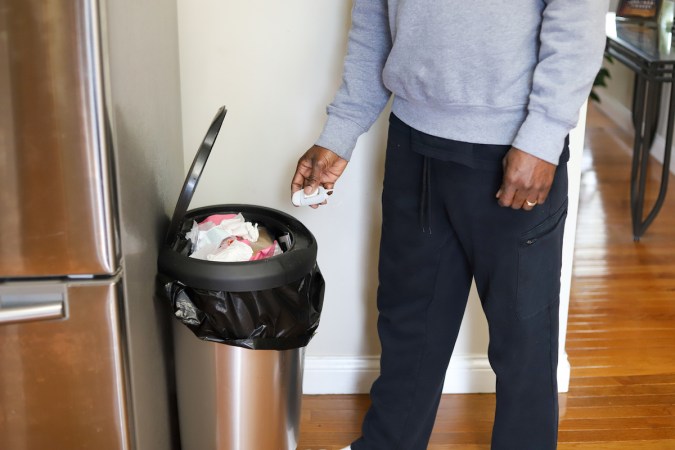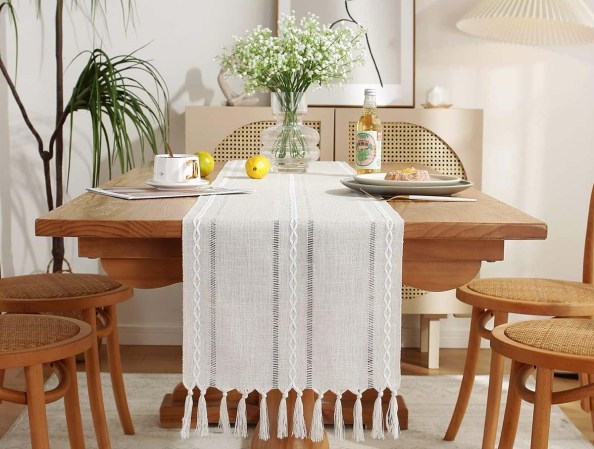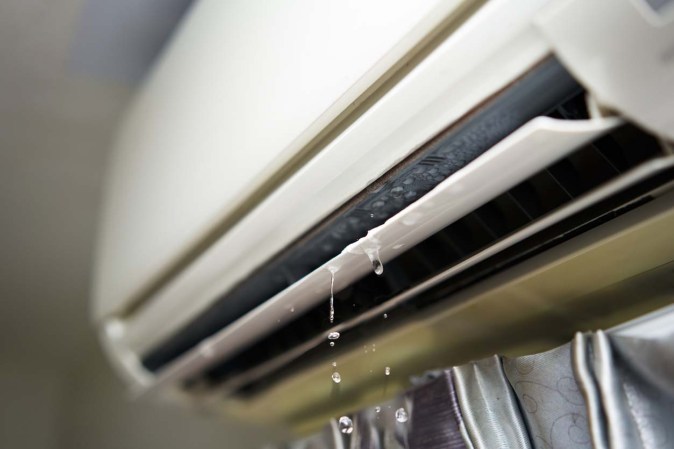We may earn revenue from the products available on this page and participate in affiliate programs. Learn More ›
File this one under T for “Today I Learned….” Despite emitting from the same arachnid derrière, spider webs and cobwebs are not the same thing. Spider webs are the sticky traps spiders set to capture their supper; cobwebs are but a shadow of their former spider web self.
Whether it’s Spooky Season or Halloween has long passed, people across the country are knocking webs from ceiling corners with telescoping dusters. It’s always an arachni-riffic time to learn about these sticky, icky structures and the spiders who call them home.
RELATED: What Attracts Spiders? How You’re Inviting Spiders Into Your Home—And What To Do About It
Silk—It’s Not Just for Worms
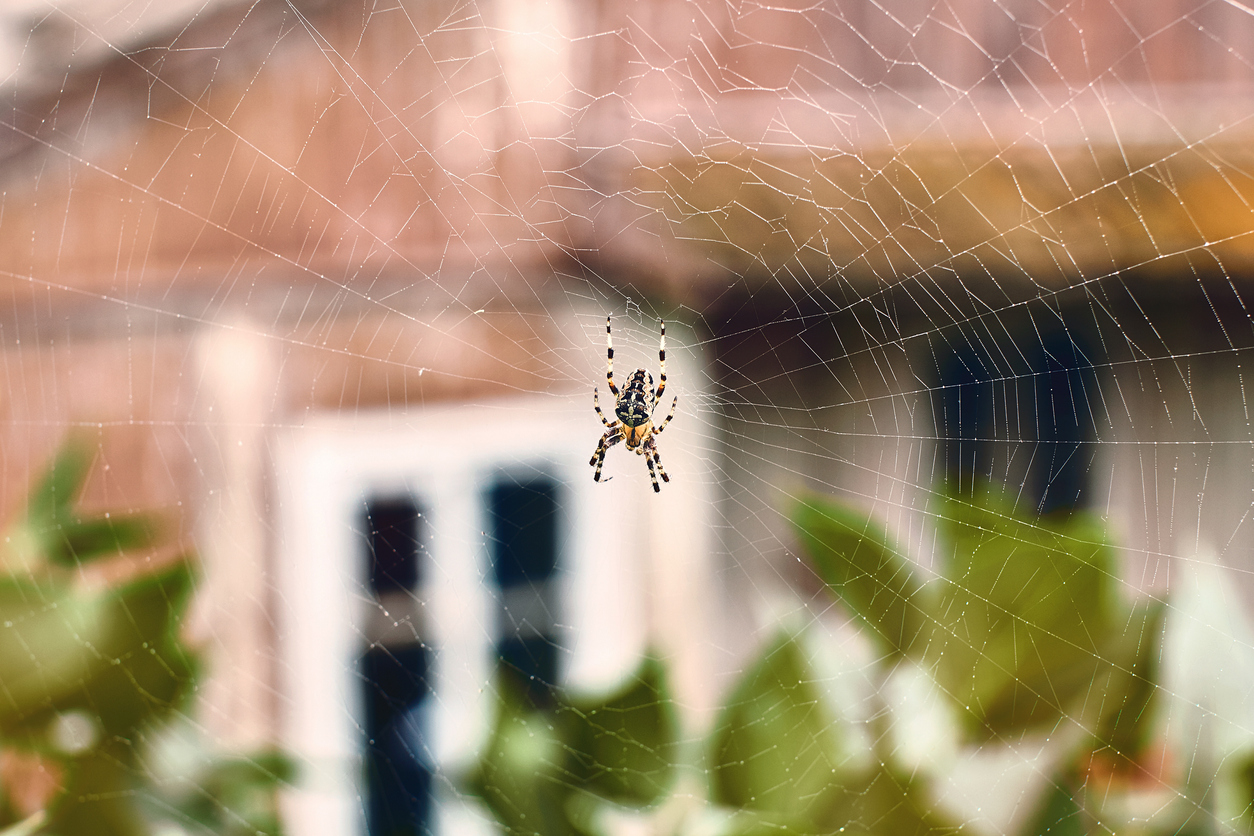
Spider silk is an incredible material. Inside these fiber artists’ eight-legged bodies, it’s a liquid, but after a trip through the spider’s spinnerets, it becomes the gossamer strands we all know (but probably don’t love).
While “spinnerets” might sound like a 1960s Motown group, they’re actually the silk-spinning glands located on the spider’s underside, near its rear. Most spiders have between four and six spinnerets with which to weave their webs.
Spider silk is an astonishing 1,000 times thinner than a human hair. It’s also five times as strong as steel. Given that there are 48,000 known species of these particular arachnids, it’s no surprise that there could be hundreds of different silk types, each earmarked for a different purpose. There’s a sticky silk for trapping prey, a swathing variety for wrapping it up, a stretchy silk that forms the capturing lines of a web, and even a couple of all-purpose types. Some kinds of spider silk are antimicrobial; they’re also highly UV-reflective—an attractive quality to many delicious insects.
Spiders can tune their silk like the strings of a guitar, allowing them to feel nanometer vibrations that signal not only the arrival of future food, but also what’s on the menu. And spiders use their silks to create many structures besides webs: drag lines, baby-spider swaddling clothes, fast-traveling slingshots, even tiny cocoon-like coverings they can crawl into, like spider-size sleeping bags.
Spiders are also eco-conscious; they often tear down and replace their web every day, but they eat the silk in order to recycle its proteins.
RELATED: Solved! Why Are There So Many Spiders in My House?
What About Cob?
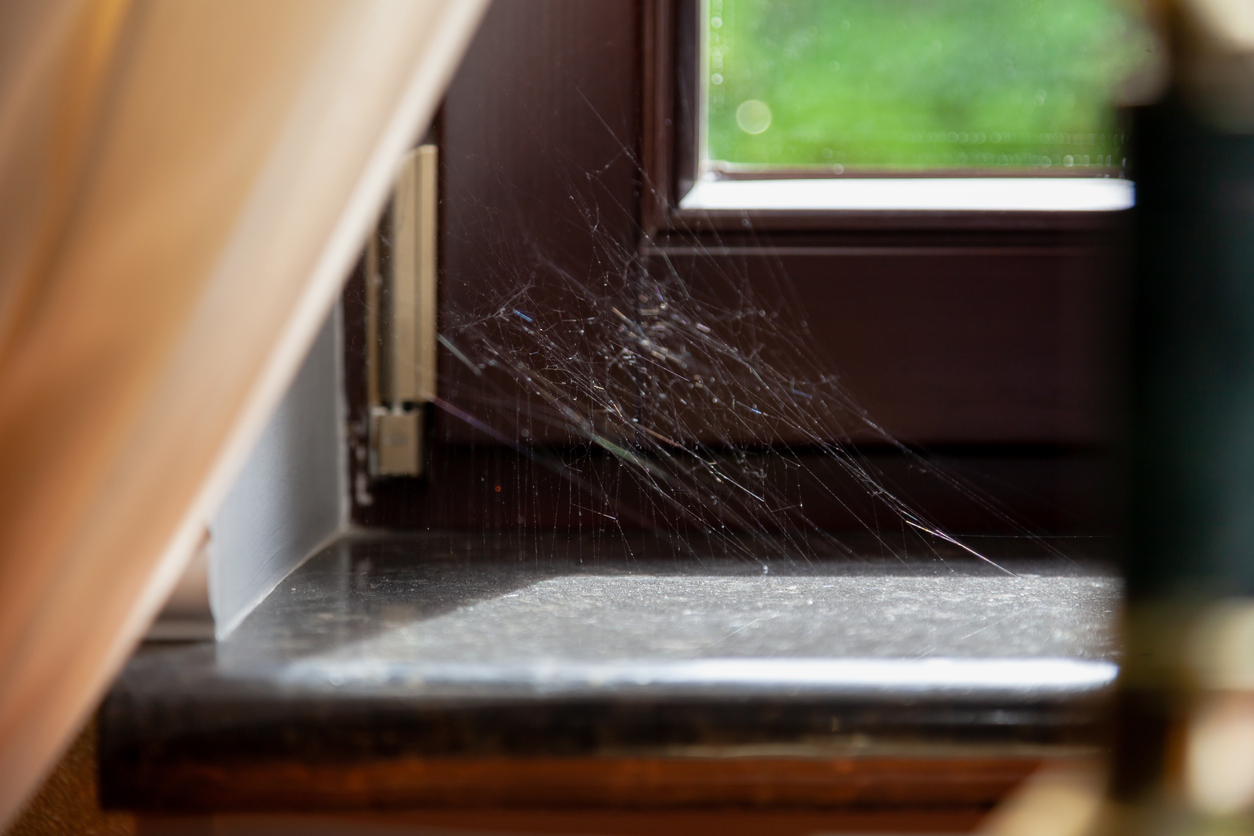
So what, then, is a cobweb?
In some cases, cobwebs are simply spider webs that were left behind, abandoned by their creator in favor of better digs—whether that’s another corner of the house or a different location altogether, to which they travel via “ballooning.” (Remember the end of Charlotte’s Web, when Charlotte’s daughters emerge from her egg sac, unspool a length of silk, and start floating away on the breeze, much to Wilbur’s chagrin? That’s ballooning.)
Cobwebs are still sticky, but if they’re not razed by their maker and recycled into new silk structures, they gather dust and airborne particulates. That makes these relics look dry and dusty and, ergo, embody that creepy, haunted house energy.
Some cobwebs, however, aren’t abandoned at all. Called a “tangle web,” this messy, irregular, spider-built structure is made by members of the family Theridiidae—including regular ol’ house spiders and infamous black widows.
Tangle webs stand in direct opposition to orb webs—the radial, wheel-shaped classic we associate with spiders, the type Charlotte wove, the original inspiration for the Halloween-Industrial Complex and its millions of dollars’ worth of merch.
Orb webs and tangle webs aren’t the only spider architectural style, but they are the design you’re most likely to discover in your home.
RELATED: 10 Pests That Might Be Living in Your Garage
Wipe Out Webs in Your Home

Whether the webs in your house are spider- or cob-, it’s not hard to get their builders to look for greener pastures.
First, clean all the potentially cobwebby spots regularly—the corners, of course, but also under furniture, between windows, stretching from overhead lighting fixtures to ceilings, in seldom-used cupboards and cabinets, and pretty much everywhere in any attic or basement (especially if the power’s gone out and your only flashlight is dim because its battery is dying and you heard an alarming noise and you’re all alone and you go to investigate with a pounding pulse and the call is coming from inside the house! Just kidding. But yeah, lots of cobwebs in the basement and attic).
A dash or two of peppermint essential oil, mixed into your homemade cleaner or just dotted on the door jamb, will discourage future web-weavers.
Spiders are beneficial housemates, however. They love to snack on the insects that you really don’t want in your home, like ants, flies, and mosquitos. A few webs here and there are a minimal price to pay for what are essentially free pest-control services.
That said, if you can’t bring yourself to co-exist peacefully, look to the many natural solutions for sending spiders packing. Alternatively, you can hire one of the best pest control companies (like Orkin or Terminix) to take care of your spider problem for you.
